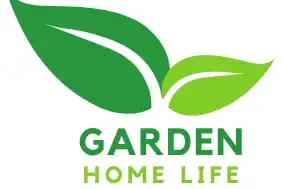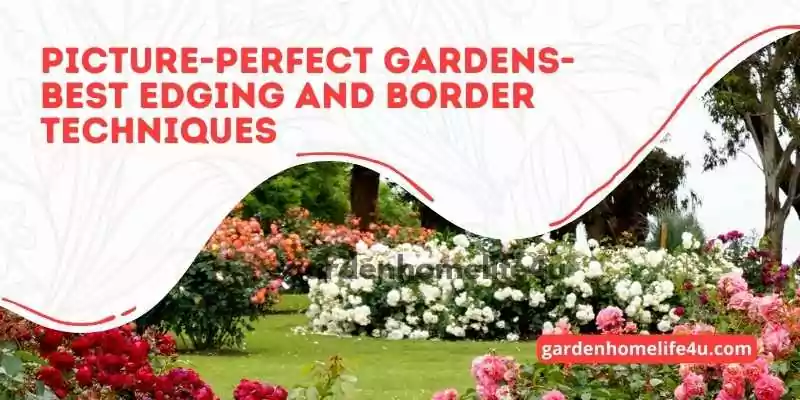Step into the artwork of horticultural artistry, where gardens are transformed into picturesque canvases, and landscapes become a symphony of beauty and design. Welcome to “Picture-Perfect Gardens: Best Edging and Border Techniques,” a guide that unveils the secrets behind creating masterpieces of natural allure through the power of edging and borders.
In the tapestry of garden design, edging and borders serve as the skilled hands of an artist, bringing definition and elegance to every element within the landscape. Like an expertly crafted frame that enhances the beauty of a painting, these techniques elevate the splendor of your garden’s flora, making every bloom and foliage shine with newfound brilliance.
Within the pages of this guide, we embark on a journey to discover a repertoire of edging and border techniques that transcend the ordinary, captivating the eye and igniting the imagination. Whether you envision a charming cottage garden, a modern oasis of serenity, or a wild and whimsical escape, the art of edging and bordering allows you to realize your garden’s full potential.
Join us as we explore a diverse array of materials, patterns, and styles, each holding the potential to metamorphose your garden into a work of living art. From classic stone edges that exude timeless elegance to contemporary metal borders that harmonize with modern aesthetics, our curated collection of techniques caters to every gardener’s vision and passion.
Garden borders are an excellent method to distinguish one or more parts of your garden. They may be utilized to visually tie in various parts of a space, divide grass from the garden, or work with walkways to move visitors through the garden, regardless of your garden’s design. One may design a garden border out of a wide range of edging plants, materials and arrange them in a variety of ways using garden edging techniques described below.
Once the mud has dried up, this is an excellent job to take on in the spring. Just keep an eye out for any plants that haven’t popped through the soil anymore. You don’t even have to leave your garden to obtain materials if you have old bricks, stone, or wood lying around.
Garden Edging Techniques – Why add landscape edging to a garden?
Garden edging’s primary function is to define space, so as long as it divides two different regions, it may be almost anything. Stone, brick, and concrete are common possibilities, while more unusual materials include logs and shells, as well as recycled roof tiles and coated wire.
They even keep the garden looking nice and tidy, and may also keep visitors out of particular areas if necessary. They are useful for separating weeds from flower beds and mulch from lawns, as well as adding charm and character to your garden design.
Which points to note when selecting Garden Edging Plants?
Choosing the appropriate edging plants might be difficult, but here are some essential questions to consider:
- What is the purpose of the place you are edging and choose the appropriate one?
- What is the current state of the location? Is it better to be in the sun or the shade? Is it better to be dry or wet? Is it more secluded or popular? Ensure important points to pick plants that will grow in your environment.
- What are the goals that you want to acquire? For example, some edging plants are ideal for just creating aesthetic borders, while others might provide a physical barrier. So select the one you like!
Which are the best Garden Edging Plants?
The first step is to determine which sections of the garden require further clarity. The ideal plants to choose will be determined by the environment (wet, dry, exposed, or shaded) as well as your preferences. There’s an edging plant for every plot, whether it’s clipped and controlled, low and slow-growing, or towering and beautiful.
.A lush of tall, airy grasses counts as an edging plant. Even green foliage is used to soften the hard edges of brick, steel, or stone, or they can become a focal point in their own right when it blooms. An edging plant which is tall, airy grasses, beautiful green Lady’s Mantle also works best.
How to achieve uniformity with your Garden Edging Plants?
To achieve uniformity, you’ll need to buy many of the same plants. Measure the area you wish to fill. To assess the spread of a plant, read the label carefully about its width and its spread characteristic. Then figure out how many plants you’ll need. It may take a season or two for the plants to grow out, but it’s better to be patient than to put them too close together. Remember, overcrowded Plants will not flourish.
Garden Edging Techniques – Clever Garden Edging and Border Techniques
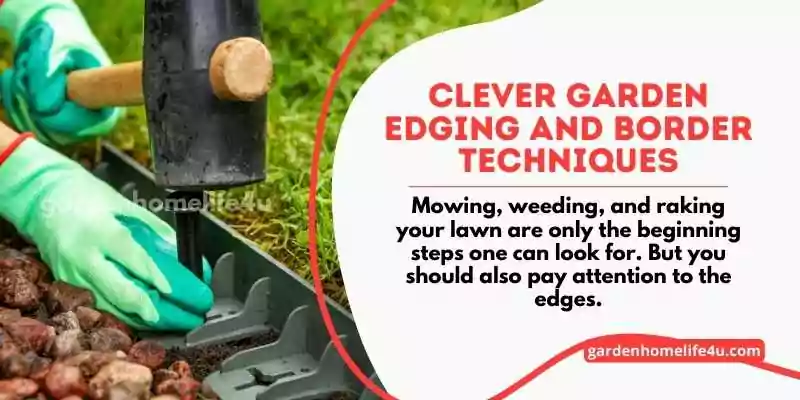
Mowing, weeding, and raking your lawn are only the beginning steps one can look for. But you should also pay attention to the edges. Without well-defined edges, even the most neatly trimmed grass would appear shabby.
There are several materials and garden edging designs to choose from. It’s a cost-effective and sensible way to keep your garden in good shape while also increasing the value of your backyard.
Metal border fencing
Metal border fencing is a simple and quick solution that is available in a variety of sizes, colors, and vintage ornamental styles. It’s easy to install and doesn’t require any digging, but unlike solid edging, it doesn’t protect your lawn from weeds spreading.
Drainage Edging
Do you need to construct a run-off for water on your deck or pathways because your garden has drainage issues? Why not make a point of it by installing some bright drainage edging? Fill drainage ditches with beautiful stones, then brighten with a variety of attractive succulents. Colored glass stones can also be added for extra interest.
Garden Edging Techniques – Curved Garden Edging Ideas
This style of edging requires more preparation and effort than regular straight edging, but the end effect is well worth it. Before drawing the line on the grass with landscaping spray, use a garden hose to mark out your chosen design on the ground. Before you begin, disconnect the hose.
Garden Edging Techniques – Glass and Rock Garden Edging
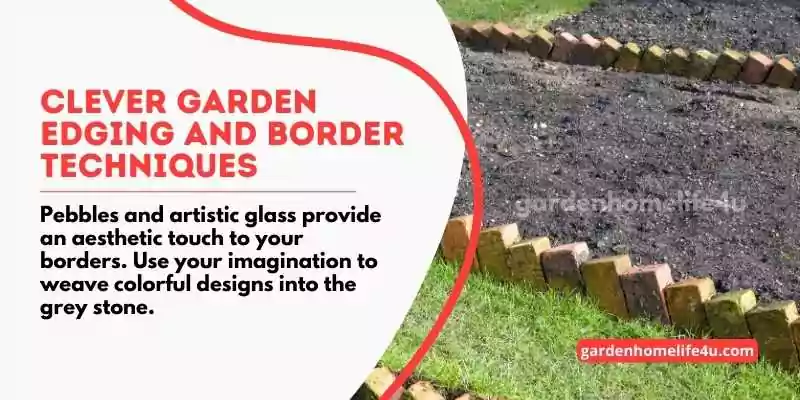
Pebbles and artistic glass provide an aesthetic touch to your borders. Use your imagination to weave colorful designs into the grey stone. Succulents will provide a burst of energy to your space without requiring a lot of maintenance. This type of edging looks great around winter gardens and shrubberies and provides a wonderful decorative touch to low-maintenance yards.
Garden Edging Techniques – Modern Stone Edging
With some modern stone edging, you may give your outdoor space an ultra-modern air. Using various forms and materials to break up the space adds aesthetic appeal while also pulling the eye along the horizon. To create an up-to-date, low-maintenance feature, alternate geometric cuts of paving slabs with stone. For a pop of color, add some shrubs or succulents.
Garden Edging Techniques – Stylish Multi-Colored Stone Edge
This is such a simple method to achieve beautiful grass edging without spending a fortune. Collect a large number of polished stones and arrange them in a thick row to create a distinctive yet easy border for your garden or walkway. You may also use colorful rocks. You may also buy polished stones from a variety of home and garden stores, which is convenient if you don’t live near a river.
Garden Edging Techniques – Rubber Garden Edging
This long-lasting lifetime edging technique is made from recycled tires. Rubber garden edging is indeed a fantastic alternative for your garden and flowerbed, scoring well in certain categories while falling short in others. It won’t survive as long as metal, but it will surely outlast plastic. Because of its malleable nature, you’ll be able to find it in a wider range of forms and styles than metal edging, and it’s also highly flexible, making it simple to utilize in several situations.
Creative Wine Bottle Edging
Cheers to all Wine enthusiasts! This grass-edging design is both unique and brilliant. Simply place old wine bottles upside down in the ground to create a border for your garden or walkway. To make it even more distinctive, you may purchase colorful bottles. You may add extra texture to the interior by adding mulch or rocks.
Black Plastic Mulch Edging
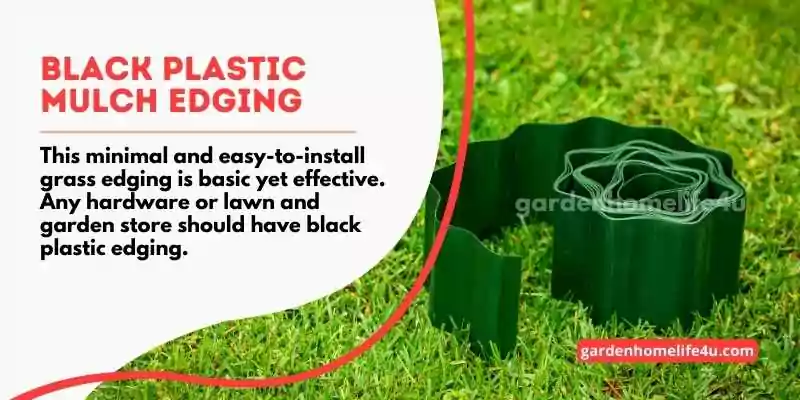
This minimal and easy-to-install grass edging is basic yet effective. Any hardware or lawn and garden store should have black plastic edging. Most of it should be buried to attract attention to the blooms while maintaining a tidy grass and garden space. The potential to create distinct styles with something so simple is the nicest part about this black edging.
Log Roll Edging
These timber log rolls are ideal for use as edging in gardens, walkways, and flower beds. They’re made up of a row of securely attached semi-circular logs that are used to secure or dress up garden borders. They look fantastic around a flower bed and may be used to partition off an area of the yard or create an edge to a footpath.
Hard Plastic lawn Edging
This would be of this type as below. as a personal note, we find that this kind of edging is very flexible, efficient, and long-lasting and could fall into various application areas. Price-wise it could be slightly on the higher end however we think it’s worth the cost. when installed it’s sufficiently flexible and durable so as to last a few years in harsh weather and ground conditions.
we shall go into some details for this application. This is a do-it-yourself gardening and landscape project with a convenient durable and eco-friendly product that is very versatile. Easy border landscape badge is used to define the separation between aggregate and more it’s ideally used to create a border guide for laying hardscape paving stones that can be used by the DIY home gardener for projects, as well as recycling tires for a greener tomorrow. Rubber makes these edges extremely flexible and durable and can be left in place in the garden during the winter months without risk of cracking or breakage.
Tools you would need for installation: Measuring tape, mallet, and utility knife. Always wear safety goggles to protect from airborne breaks, always wear garden gloves to protect hands from injury.
credits: Primerose Shop
How to make a clean break between the grass and the garden?
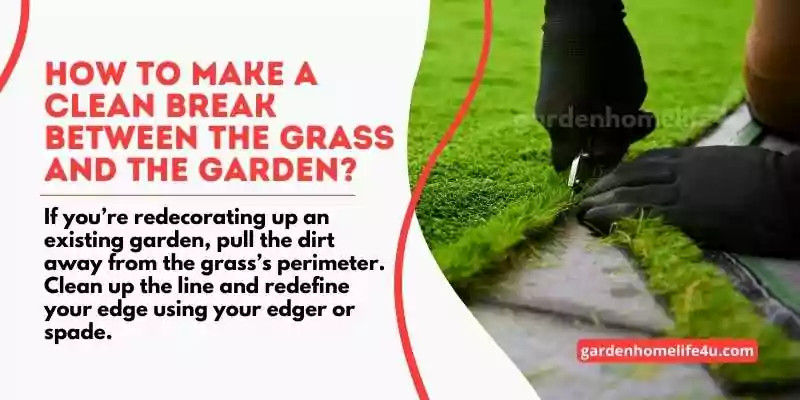
If you’re redecorating up an existing garden, pull the dirt away from the grass’s perimeter. Clean up the line and redefine your edge using your edger or spade.
Cut with your edging tool or spade if you’re constructing a new edge.
The Closure
You may come up with an endless number of garden edging designs utilizing various materials. Garden edging not only protects your garden beds but also enhances their attractiveness. Happy Gardening!!
Meta Title: Brilliant Garden Edging and tips and tricks to follow for a perfect look
Meta Description: Are you looking for garden edging insight? When it comes to keeping our garden edging plants tidy, having the appropriate garden borders and edge is crucial. Check out some of our favorite ideas!
